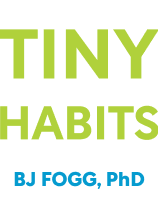

This article is an excerpt from the Shortform book guide to "Tiny Habits" by BJ Fogg. Shortform has the world's best summaries and analyses of books you should be reading.
Like this article? Sign up for a free trial here .
What are the two types of leaders of group change? What are the benefits of trying to make behavior changes in a group?
There are two types of leaders when it comes to group change: Ringleaders and Ninjas. Ringleaders are clearly recognized leaders of change and Ninjas try to make positive changes from the shadows.
Continue on to learn about the benefits of changing with others and the types of group change leaders.
Changing With Others
When making behavior changes—it’s best to experiment on yourself first and get a feeling for the Behavior Change process before complicating things by adding other people. But in this article, you’ll see how to help other people change, both individually and with group change.
Even individual changes can have far-reaching effects on others. Think back to Juni who was able to encourage her son’s singing because she beat her sugar habit, and Jill, who created a harmonious family environment for her daughter by wiping the kitchen counter. These women created habits for themselves that had a direct positive effect on other people.
The People in Our Lives: Help or Hindrance?
The people around us can be incredible resources. When you’re going through the Behavior Design steps, it can help to enlist someone else to help you generate ideas.
But not all of the people around us want us to change. Look out for enablers, who consciously or unconsciously sabotage your new habit. These might be the husband who undercuts his wife’s weight-loss plan by waving pizza under her nose as a “joke” or the mother who tells her adolescent son that his interest in meditation is “just a phase.”
Unhelpful habits can emerge as a part of group change dynamics. Examples of this are families in which all members are glued to their phones during family dinner, overly critical or lax work environments, and gossipy friendship groups.
The good news is that one person can spark a group change—if the change process is designed well.
General Advice for Behavior Change in Groups
- Start small. Before tackling behavior change in a big company, try it in your family. Before you try it in your family, try it on yourself.
- Start with Fogg Maxim #1: “Help people do something they already want to do.” Get clear on the group’s aspirations.
- Understand that all groups are unique and there’s no cure-all prescription. Group changes need to be tailored, just as individual ones do.
The Ringleader and the Ninja
As a behavior change leader, you can take on one of two roles.
The Ringleader is a clearly recognizable leadership role. As a Ringleader, you openly explain and guide the Behavior Design process to the group. Perhaps you’re a manager at a company; perhaps you’re a family member who reads this book and decides to introduce some Tiny Habits at home. As a Ringleader, you explain Behavior Design principles systematically and build your group’s enthusiasm and knowledge around behavior change.
The Ninja is an undercover role. Perhaps you’re a work team member and don’t want to step on the manager’s toes by overtly championing change; perhaps you have adolescent children who you know will resist any kind of “system” you suggest. As a Ninja, you smuggle Behavior Design principles and methods into group discussions.
The Ringleader and the Ninja follow the same steps but use different techniques.
The steps of the Behavior Design process are as follows:
Select
1. Pinpoint your exact aspiration or outcome
2. Brainstorm possible behavioral solutions
3. Identify the Golden Behaviors
Design
4. Find the tiny version
5. Choose your prompt
Practice
6. Celebrate
7. Repeat, refine, and upgrade
1. Pinpoint the aspiration or outcome
As the group Ringleader, you can suggest an aspiration and ask for feedback from the group. For example: “As a family, our aspiration is X. Is that a clear statement of what we want to achieve?”
As the Ninja, you pinpoint the issue more subtly: “Just so I’m clear, we’re aiming for X, right?”
2. Brainstorm possible behavioral solutions
As the Ringleader, you can overtly use the Behavior Design tools “Swarm of Behaviors” and “Magic Wanding” (imagining you have a magic wand and listing wildly fantastical behavioral solutions). You could run a verbal brainstorming process (this works well with groups of up to twenty people) or do this electronically or on paper (best for groups of over twenty people).
As the Ninja, you can implement Magic Wanding indirectly by asking questions such as “What would be the ideal solution here?” and “What’s something crazy that might work?”
3. Identify the Golden Behaviors
As the Ringleader, you can overtly engage everyone in Focus Mapping using behaviors written on index cards. One approach is as follows.
- One by one, ask all group members to assign a card to a place on the vertical axis (Impact) of the Focus Map.
- When all cards have been laid out, group members continue taking turns, rearranging one card at a time without getting bogged down in explanations as to why they’re doing it.
- This process continues until the group reaches consensus. After that, repeat it for the horizontal axis (Feasibility). (Note: This process seems long, but in practice, the added structure reduces a potentially drawn-out and contentious process to around thirty minutes.)
- After Focus Mapping, publicly identify the Golden Behaviors in the top right-hand quadrant and then decide as a group on which ones you would like to implement.
As the Ninja, you can slide Focus Mapping principles into a regular discussion. You can ask the group, for example, “Which of these options would be the most effective, if we could get people to do it?” (Impact axis) and “Which of these options is the most realistic?” (Feasibility axis).
4. Find the tiny version
As the Ringleader, you can directly suggest and elicit suggestions for easy versions of a new behavior. You can also troubleshoot directly by asking the discovery question, “What is making this behavior difficult?” Let’s say, for example, that you’re a project manager, and you want to find out more about the hurdles your team is encountering in their work. You’ve asked your team to email you individually every day about the biggest hurdle they’re currently facing, but you’re not getting many responses. You ask the team specifically about each Ability Chain link in turn (time, money, mental effort, physical effort, place in existing routines) and learn that many team members simply don’t know how to identify and talk about roadblocks. Based on this, you implement a team-wide professional development workshop based on project hurdles, clearing the way for the desired behavior to take root.
As the Ninja, you can ask sneaky discovery questions. For example, if your teenager is struggling to get her homework done, ask her, “What is making this difficult for you?” Then suggest some possibilities based on her weakest Ability Chain link. Another effective tactic for a Ninja is to subtly redesign the environment to make a desired behavior easier.
5. Choose the prompt
As the Ringleader, you can ask each group member to think about an individual Anchor that will work for them. It’s a good idea to come up with options as a group and then have group members pick their Anchors individually. You can also help each group member to formulate their own Tiny Habit recipe based on the Anchor: for example, “After I put my afternoon coffee on the desk, I will open my project hurdle notes and write a brief email about today’s hurdles. Then I will take a sip of coffee and smile.”
As the Ninja, you can help people to think individually about the best prompt for them. One way to do this is to look at group members who are currently succeeding at the behavior and ask them more about their approach, and about their prompt in particular. Then you can suggest that the less successful team members adopt the same prompt.
6. Celebrate
Celebration isn’t needed for one-time behaviors. For ongoing behaviors, both Ringleader and Ninja can encourage celebrations as follows.
As the Ringleader, your role in celebration is very important. If you think back to your own personal mini-celebrations, some of these are probably related to praise or recognition from an authority figure (a parent, a teacher, a boss). You have the same psychological importance to your employees. There are three ways that you can promote Shine as a Ringleader:
- Explicitly discuss the connection between emotions and habits with your group, emphasizing that feeling good is the best way to change. Help group members to find their own effective personal celebrations.
- Praise and celebrate successful group members yourself. A leader that can bring about feelings of Shine is extremely valuable. Reflect on the positive feedback you give. Is it lavish enough to evoke Shine and immediate enough to reinforce the desired behavior?
- Encourage an environment in which group members celebrate each other.
As the Ninja, you can spark Shine in other group members through praise and celebration. You don’t need to be an authority figure to have an important effect.
Both Ringleaders and Ninjas should try to tailor their praise to the recipient. As individuals, we respond differently to different types of praise. Some of your group members may respond best to praise based on their personal best (“This is your best sales performance ever!”), while others will feel more Shine following comparisons with others (“You made more sales than anyone else this week!”). Experiment to figure out which types of praise work best for your team members and then draw on this knowledge when giving feedback.
7. Repeat, refine, and upgrade
As the Ringleader, make sure you frame the first time you progress through the Behavior Change steps as the start of a process. This sets up the rest of your group to expect iteration, experimentation, and adjustment rather than a one-time “silver bullet” solution. Avoid making value judgments and discourage any value judgments from team members. Explain that if the first try doesn’t work, this isn’t a reflection on the character or self-discipline of the group but an evaluation of the design itself.
As the Ninja, you can raise the above points in a more democratic way, working behind the scenes to discourage judgment and encourage experimentation.

———End of Preview———
Like what you just read? Read the rest of the world's best book summary and analysis of BJ Fogg's "Tiny Habits" at Shortform .
Here's what you'll find in our full Tiny Habits summary :
- How you can successfully create new habits that stick
- Why you don't need motivation, just science
- Why even flossing one tooth should be considered a victory






